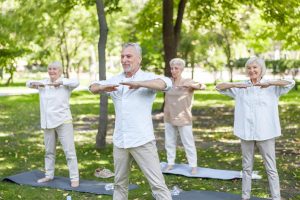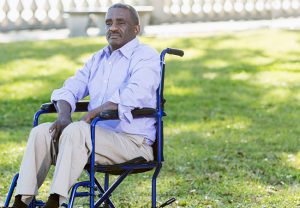Improve Cognitive Function in Older Adults with Tai Chi Practice
By John M. de Castro, Ph.D.
“The practice of Tai Chi promotes the preservation of cognitive abilities including global cognitive functions, semantic memory, verbal learning/memory, self-perception of memory, and visuospatial skills in the elderly.” – Karine Huy-Leng Lim
The aging process involves a systematic progressive decline of the body and the brain. Every system in the body deteriorates including cognitive function (thinking ability) and motor function with a decline in strength, flexibility, and balance. There is some hope as there is evidence that these declines can be slowed. For example, a healthy diet and a regular program of exercise can slow the physical and cognitive decline of the body with aging. Also, contemplative practices such as meditation, yoga, and tai chi or qigong have all been shown to be beneficial in slowing or delaying physical and mental decline.
Tai Chi has been practiced for thousands of years with benefits for health and longevity. Tai Chi training is designed to enhance function and regulate the activities of the body through regulated breathing, mindful concentration, and gentle movements. Tai Chi is not strenuous, involving slow gentle movements, and is safe, having no appreciable side effects, it is appropriate for all ages including the elderly and for individuals with illnesses that limit their activities or range of motion. Tai Chi has been shown to help the elderly improve attention, balance, reducing falls, arthritis, cognitive function, memory, and reduce age related deterioration of the brain. The research has been accumulating. So, it makes sense to step back and summarize what has been learned about the effectiveness of Tai Chi practice for cognition in older adults.
In today’s Research News article “Dose-Response Association of Tai Chi and Cognition among Community-Dwelling Older Adults: A Systematic Review and Meta-Analysis.” (See summary below or view the full text of the study at: https://www.ncbi.nlm.nih.gov/pmc/articles/PMC8003349/ ) Chen and colleagues review, summarize, and perform a meta-analysis of the effects of Tai Chi practice on cognitive ability in older adults (55 years old and older) living in the community. They identified 16 published research studies.
They report that the published research studies found that Tai Chi practice produced significant improvements in cognitive function with moderate to large effect sizes. But there were no relationships between the amount of Tai Chi practice and the amount of improvement in cognitive function, including session duration, amount of practice per week, or amount of practice over the entire study.
These meta-analysis findings suggest that Tai Chi practice has large and significant effects on the high-level thinking ability of community dwelling older adults. It would appear that even the smallest dose of Tai Chi practice is capable of producing these improvements. These improvements in cognition may be important for preventing or mitigating cognitive decline with aging and prevent age related dementia. This makes the safe and fun Tai Chi practice and almost ideal practice for maintaining cognitive ability with aging.
So, improve cognitive function in older adults with Tai Chi practice.
“A regular tai chi exercise regimen enlarges the brain and enhances the cognitive abilities of the elderly.” – Hans Villarica
CMCS – Center for Mindfulness and Contemplative Studies
This and other Contemplative Studies posts are also available on Google+ https://plus.google.com/106784388191201299496/posts and on Twitter @MindfulResearch
Study Summary
Chen, M. L., Wotiz, S. B., Banks, S. M., Connors, S. A., & Shi, Y. (2021). Dose-Response Association of Tai Chi and Cognition among Community-Dwelling Older Adults: A Systematic Review and Meta-Analysis. International journal of environmental research and public health, 18(6), 3179. https://doi.org/10.3390/ijerph18063179
Abstract
Previous studies indicated that Tai Chi might be an effective way to improve or prevent cognitive impairments in older populations. However, existing research does not provide clear recommendations about the optimal dose of Tai Chi practice, which is the most effective in improving cognitive function in older adults. The purpose of this systematic review and meta-analysis was to investigate the dose–response relationship between Tai Chi and cognition in community-dwelling older adults. A total of 16 studies with 1121 subjects were included in this study. Meta-regression analyses of Tai Chi duration (Tai Chi session duration, Tai Chi practice duration per week, study duration, and Tai Chi practice duration for the entire study) on the study effect size (ES) were performed to examine the dose–response association of Tai Chi and cognition. The results showed that there was a positive effect of Tai Chi on cognitive function, but there were no statistically significant dose duration effects on cognition. The findings suggest that Tai Chi has beneficial effects on cognitive function, but a longer duration was not associated with larger effects. In order to establish evidence-based clinical interventions using Tai Chi, future research should clearly demonstrate intervention protocol, particularly the style and intensity of Tai Chi.
https://www.ncbi.nlm.nih.gov/pmc/articles/PMC8003349/





